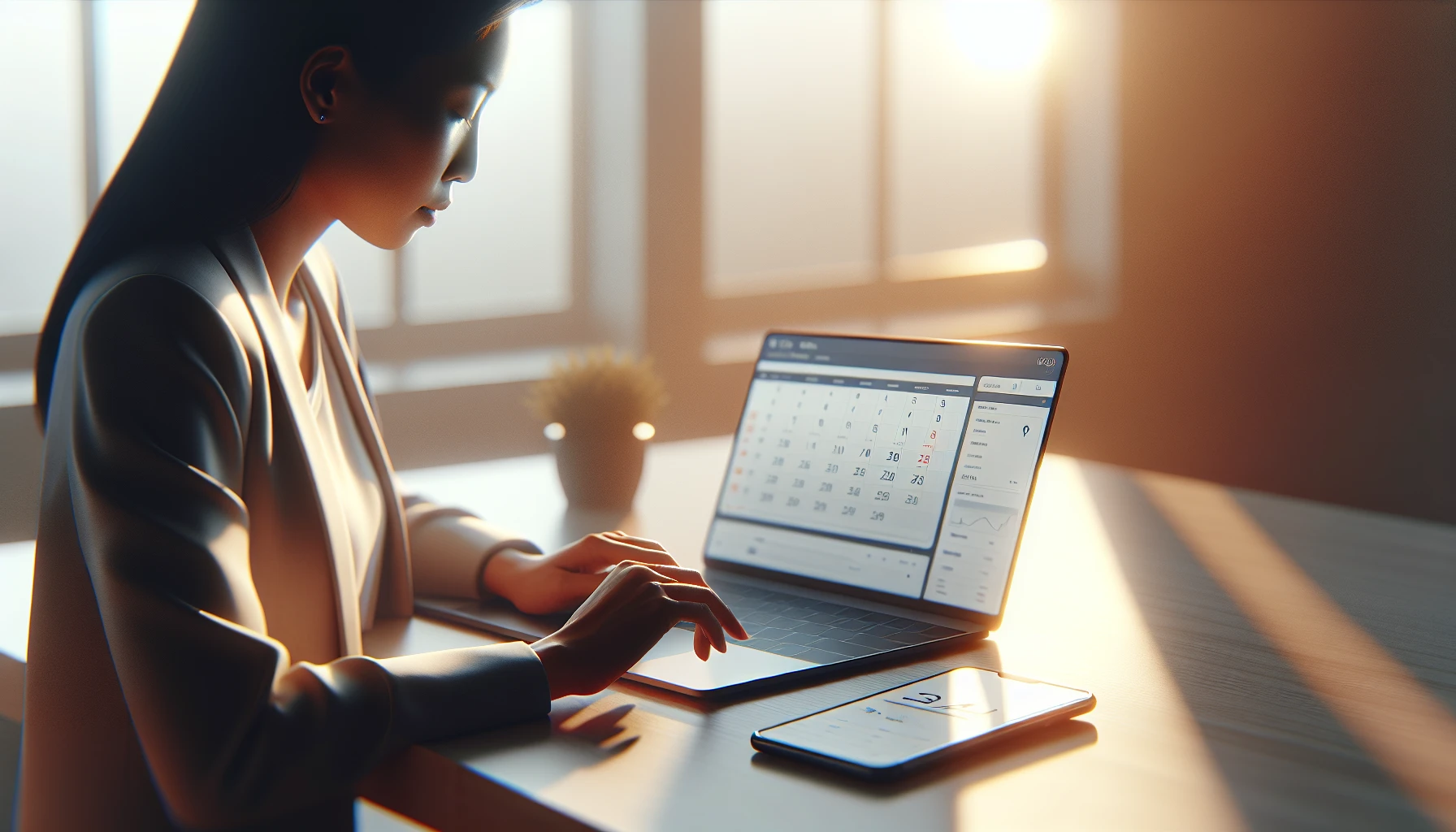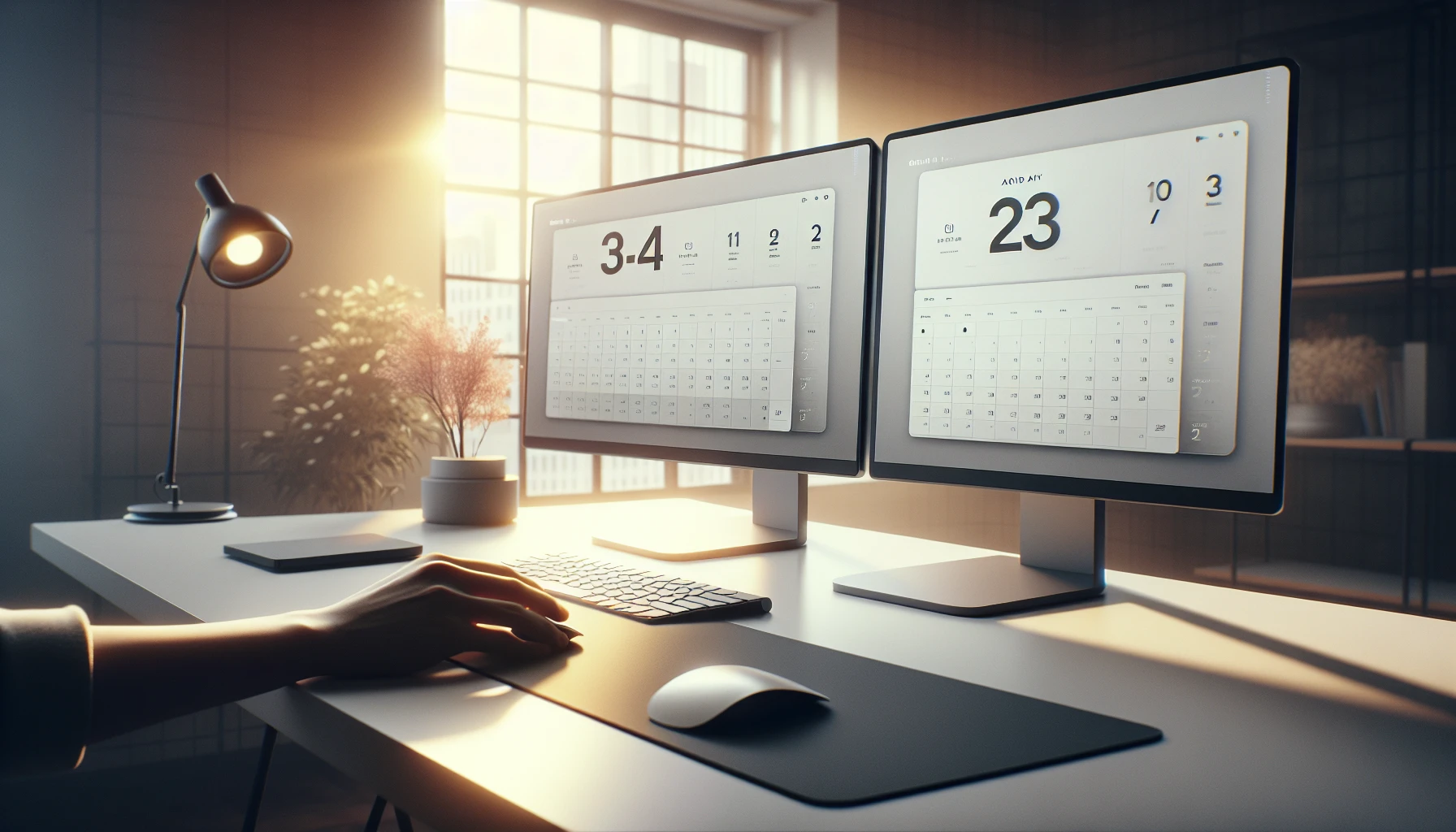· Ricardo Batista · 14 min read
Best Practices - Sending Meeting Reminders Made Easy
Meeting reminders can cut mix-ups using Google Calendar and Teams; simple ways to prevent missed calls while keeping your day smooth.

Effective meeting reminders can be tricky sometimes, but a few simple tweaks may really help especially when using tools like Google Calendar and Microsoft Teams. This guide shows clear techniques for lowering no-shows and confusion, with practical uses of automated systems and templates that help you keep things organized in a hectic workday.
Key Takeaways
- Meeting reminders help keep everyone on track and reduce missed meetings
- Using tools like Google Calendar and Microsoft Teams makes scheduling and notifications simpler
- Our system automatically pings attendees that arrive late, showing our expertise in keeping meetings running smoothly
- Customizable reminder templates let you add personal touches and adjust times to fit your style
- Even small tweaks in your reminder process can lead to better organization and a smoother day
Introduction to Meeting Reminders
Meeting reminders are key to keeping everyone on track. When you take a few minutes to set up reminders that are clear and personalized, you’re not only letting people know when and where to show up, but you’re also reinforcing the importance of the meeting. Clear reminders help prevent confusion, and they give late arrivers a nudge, which can be super helpful if you often find that attendees show up after the meeting has started.
Why Clarity and Personalization Matter
When reminders are clear, your attendees know what’s expected and can plan ahead. Personalized reminders have that extra bit of charm and human touch. Here’s why they matter:
- They make the invite feel less robotic.
- They help ensure that important details aren’t overlooked.
- They let you add a friendly note to encourage punctuality.
Some teams even set up automatic pings so that if someone is running late, they get a quick alert – a sort of “hey, are you on your way?” This adds a layer of accountability without being too pushy.
Calendar Integrations and Email Automation
One of the easiest ways to set up meeting reminders is through calendar integrations and email automation. This ensures that the right people get the info at the right time without having to manually follow up.
Using Google Calendar for Automated Meeting Invitations
Google Calendar is widely used because it simplifies scheduling and invitations. Here’s how to set up a reminder using Google Calendar:
- Open your Google Calendar and click on the desired meeting slot.
- Add a clear title and description with all relevant details.
- Use the “Add notification” feature to set reminders at strategic times (for example, one notification an hour before and one 10 minutes before the meeting starts).
- Consider adding a message about the importance of being on time. For instance, “Please join on time; late arrivals might miss important updates!”
- Save and send invitations to all participants.
For those interested in a deeper dive into setting up meeting reminders, check out this internal guide on Meeting Reminders For Google Calendar.
Email Automation for Meeting Invitations
Email automation is another useful method to send reminders. With email scheduling, you can prepare a sequence of reminder messages that go out at predetermined intervals. Many email services allow you to do this:
- Draft your initial invite email with the meeting link, time, and agenda.
- Set up follow-up emails using your provider’s scheduling features. A good rule of thumb is to send a reminder 24 hours before and another one 1 hour before the meeting begins.
- Include a friendly note: keep the tone relaxed, like, “Hey, just a reminder—we’re kicking things off soon!”
Automation ensures that you’re not always tied to your calendar, freeing up your time while making sure that no attendee misses out.
Robust Tools for Notifications and Settings Management
Apart from Google Calendar and email automation, there are robust tools like Microsoft Teams that offer integrated notifications and settings management for meeting reminders. These tools are built with modern communication in mind and can help keep the flow of information seamless.
Microsoft Teams and Its Notification Features
Microsoft Teams stands out because it not only manages your meetings but also keeps your team informed with timely notifications. Here’s how to leverage Teams for effective reminder management:
- Use the chat feature to automatically send a quick ping to participants who join a meeting late. This helps in politely reminding them to settle in without disrupting the meeting flow.
- Check out the notification settings. Tailor these to send a gentle reminder as the meeting starts, perhaps with a message like, “We’re about to begin—please join if you haven’t already.”
- Integrate Teams with your calendar. This way, the meeting details sync automatically, reducing manual errors and ensuring that all team members have the latest information.
Teams also allows you to configure recurring reminders so that if someone is habitually late, they get a specific message designed to nudge them for punctuality. For additional tips and best practices tied to Teams, you might want to explore our internal resource on Meeting Reminders For Teams.
Templates and Techniques to Slash No-shows
No-shows can be a real headache. Using the right templates and techniques can help reduce the chance that people miss your meetings. Platforms like YouCanBookMe and Apptoto offer intuitive scheduling and proactive reminder systems that can drastically cut down on no-shows.
Creating Effective Reminder Templates
Templates ensure that you cover all the essential details in every reminder. They help you maintain consistency and save time. Here are some bullet points to consider when crafting your template:
- Start with the meeting name and its time.
- Mention the meeting link or location.
- Include a brief agenda so that attendees know what to expect.
- Add a gentle reminder about punctuality – maybe even a note saying, “If you’re running late, no worries, just hop on whenever you can.”
- End with a simple thank you or a note that encourages participation.
Using simple language in your templates keeps the tone friendly and accessible. With these templates, even if someone tends to be late, the reminder can automatically ping them as soon as the meeting kicks off.
Utilizing YouCanBookMe and Apptoto for Automated Reminders
Platforms like YouCanBookMe and Apptoto are excellent when it comes to seamless scheduling. They offer a suite of tools designed to reduce the no-show rate:
- Set up your availability and let the platform manage the scheduling.
- Use custom reminders that are sent via email or text message. These reminders can include additional details specific to that meeting.
- Configure the system so that if someone logs into the meeting late, an automated nudge is sent out to help them catch up with the discussion.
With these platforms, you can integrate a follow-up message for those who have been late repeatedly, prompting them gently with something along these lines: “We noticed a few delays recently; let us know if there’s anything affecting your participation.” This kind of nudge helps maintain accountability without coming off as too harsh.
Advanced Resources for Productivity Insights
When you’re focused on keeping meetings on track, every bit of productivity insight counts. For users who want to boost clarity and efficiency even further, tools like Krisp AI come in handy. They not only help with audio enhancements like noise cancellation but also provide insights into productivity trends.
Leveraging Krisp AI for a Clear Meeting Experience
Krisp AI can be a game-changer during virtual meetings. It offers features like noise cancellation to ensure that background noises don’t disrupt the flow, which can be especially useful if someone joins late and might be in a noisy environment. Here’s how to make the most of Krisp AI:
- Integrate Krisp with your communication tool. This way, if someone’s background noise is distracting, Krisp automatically cleans the audio—keeping the discussion clear.
- Use Krisp’s productivity insights to understand if certain times of the day have more issues with background noise or late arrivals.
- Set up periodic reminders using Krisp’s integrations so that participants are aware of best practices, like using headphones in noisy places.
Remember, a good meeting experience isn’t just about timing—it’s also about ensuring that sound quality supports clear communication.
Tapping into Communities for More Tips
Besides using advanced tools, online communities are a treasure trove of ideas and workflows. Platforms like HubSpot offer communities where you can learn from others about best practices. Here’s what you can do:
- Join discussions and ask for advice on how to reduce late arrivals.
- Share your own success stories and get feedback.
- Explore case studies and resource articles that provide step-by-step instructions on setting up effective reminders.
These communities often share templates and techniques that have worked in real-world scenarios, so they can be really helpful if you’re looking for fresh ideas or troubleshooting advice.
Automatic Pings for Late Arrivals: Practical Steps
A unique aspect to consider is setting up automatic pings for participants who join late. This proactive approach can help manage the flow of the meeting and ensure that everyone is on the same page, even if someone is a few minutes late.
How to Set Up Automatic Pings
Setting up automatic pings requires a combination of the right tools and a bit of configuration. Here’s a step-by-step guide:
- Start by choosing a meeting platform that supports automated pings. Many modern services now offer this feature.
- Configure the settings to send out a reminder or a ping as soon as the meeting begins. This can be a simple message like, “The meeting has started; please join us if you haven’t already!”
- Test the feature before the actual meeting. Create a dummy meeting and invite a colleague who can confirm that the ping works as intended.
- Once confirmed, roll out the feature to your regular meetings, and make slight tweaks based on the feedback you receive. For example, if the ping seems too abrupt, adjust the timing or message style.
Benefits of Automatic Pings
Automatic pings can greatly reduce the disruption typically caused by late arrivals. Instead of having someone interrupt the flow of the meeting, the system sends a quick reminder, making it less of a disturbance and more of a subtle cue for the latecomer to join in. Some benefits include:
- Maintaining meeting momentum by reducing delays.
- Helping participants remain aware of the meeting start time.
- Providing a gentle reminder that supports a culture of punctuality.
For more details on different platforms that support such features, you can find additional insights in our guide on Meeting Reminders For Slack.
Additional Considerations for Automated Meeting Reminders
While the tools and techniques mentioned so far provide a solid foundation, here are a few extra considerations to keep in mind:
Keep It Simple
- Avoid overly complicated messages.
- Stick to plain language that’s easy for everyone to understand.
- Use plain text and a conversational tone.
Sometimes, a simple message is all it takes to prompt action without overwhelming the recipient with too much information at once.
Regular Updates and Feedback
- Review your reminder templates periodically.
- Collect feedback from your team about what works and what doesn’t.
- Adjust your reminder timings based on meeting attendance trends.
A regular review helps ensure that your reminders stay effective as your team or meeting style evolves over time.
Combining Tools for Better Efficiency
Don’t hesitate to blend multiple tools to get the best result. You might use Google Calendar for scheduling, Microsoft Teams for notifications, and Krisp AI for audio clarity, all working together seamlessly. By integrating these tools, you create a workflow that supports every aspect of the meeting experience—from scheduling to final participation.
Internal Strategies to Enhance Meeting Efficiency
Apart from external integrations, there are internal practices that can support your meeting reminder strategy. For example, some teams make use of quick internal documentation sharing for meeting guidelines and punctuality policies. These practices help:
- Establish clear expectations about meeting attendance.
- Provide a reference for why punctuality matters.
- Offer quick troubleshooting tips if something goes awry (like connectivity issues).
Remember, internal consistency builds a culture where everyone values and adheres to meeting times.
How to Implement Internal Meeting Guidelines
- Draft a simple guideline document that outlines the meeting reminder practices.
- Include clear instructions on what needs to be done if someone is habitually late.
- Share this document across your team via email or your internal wiki platform.
- Encourage team members to read and provide feedback, making sure the guidelines evolve with the team’s feedback.
By keeping these guidelines visible, you help reduce miscommunications and set the norm for punctuality.
Wrapping Up the Process with Automated Reminders
Automated meeting reminders are a blend of technology and good communication practices. The goal is to help everyone stay on the same page without extra manual effort. Whether you’re using Google Calendar, Microsoft Teams, or specialized apps like YouCanBookMe and Apptoto, the focus is on creating a system that prompts late joiners to catch up quietly.
- Using automation tools means fewer manual follow-ups.
- Everyone benefits from clear communication and dependable reminders.
- Simple tweaks (like including a friendly note) can make a big difference.
Remember, perfection isn’t the goal here—the aim is to keep your meeting flow smooth and ensure that no one is left out unintentionally.
That said, measure the results of your new reminder system over time. If you see a reduction in meeting delays and a smoother flow in discussions, then you know your reminders are working well. Experimenting with different timings, adjusting the tone of your messages, and even rotating between tools can keep the system fresh and effective.
Keep in mind that every team is different, so while these best practices are a good starting point, don’t be afraid to tweak them to better fit your specific needs. As you refine your process, consider checking out related internal resources such as our guide on Meeting Reminders For Zoom which offers additional insights into another popular meeting platform.
Incorporating a mix of detailed scheduling, timely notifications, and automated pings provides a comprehensive approach to reducing late arrivals. This method helps maintain meeting momentum while ensuring that latecomers still get a gentle nudge towards joining the conversation—keeping your meetings efficient and on track.
Conclusion
In summary this guide emphasized simple strategies to ensure your meetings run smoothly. We looked at key steps like using calendar integrations and simple email follow-ups, which prevent missed calls and confusion. Two main lessons are the value of clear communication and the power of automation in managing schedules while minimizing no-shows. Also, incorporating collaboration tools like Teams for quick notifications is a game changer.
These insights show that even a slight tweak in your reminder process can make a huge difference. By following these practical tips you can feel more confident about your meeting plan and keep your day organized. For those moments when attendees arrive late it can be really frustrating; that’s where our expertise comes in. Meeting Reminders can automatically ping attendees, ensuring that everyone is on time or aware of delays in a friendly, automated way.
Next steps? Try out one of the recommended tools, set up a reminder template and see the difference in your team’s performance. Enjoy smoother, more effective meetings and take control of your schedule today.
Frequently Asked Questions (FAQs)
Why are meeting reminders important?
Meeting reminders help keep everyone on track and make sure no one forgets about the session. They are simple but really effective in reducing the number of missed meetings and keep your day running smooth even when things get a bit hectic
How do meeting reminders work with tools like Google Calendar?
When you set up a meeting on Google Calendar, it automatically sends out reminders via email or notifications on your phone and computer. This way, you and your team get a little nudge before the meeting starts, making it easier to be punctual
How do meeting reminders automatically ping the attendees that arrive late to your meetings?
Our system is designed to automatically ping attendees who are running late. This means if someone hasn’t joined on time, the reminder alerts them to hop on the call. It’s a neat trick that helps keep the meeting moving and shows our expertise in managing time effectively
What if the meeting reminder doesn’t get delivered?
Sometimes technical glitches happen. In these cases, it’s good to double-check your notification settings and internet connection. Try resending the reminder or use an alternative tool like Microsoft Teams to ensure everyone gets the message
Are there custom meeting reminder templates available?
Yes, many platforms offer customizable templates for meeting reminders. You can tweak the message, set different times for notifications, and even add personal notes to make the reminder more engaging for your team. It’s a great way to keep your communication clear and tailored to your audience



